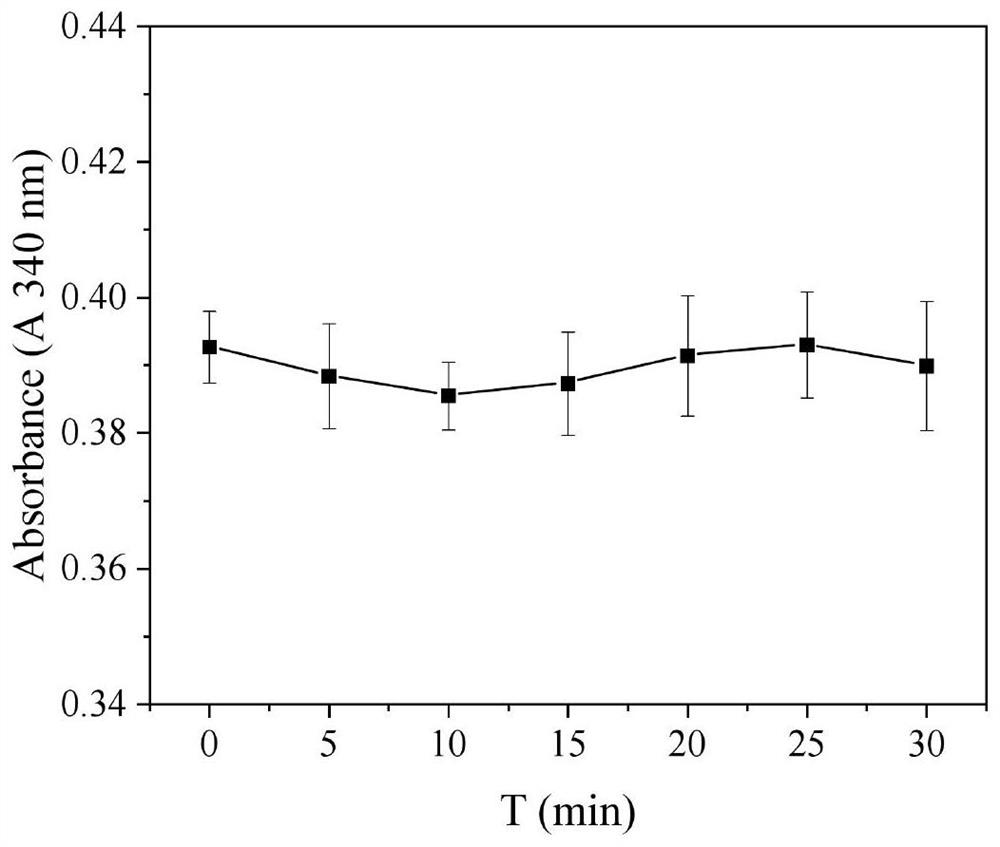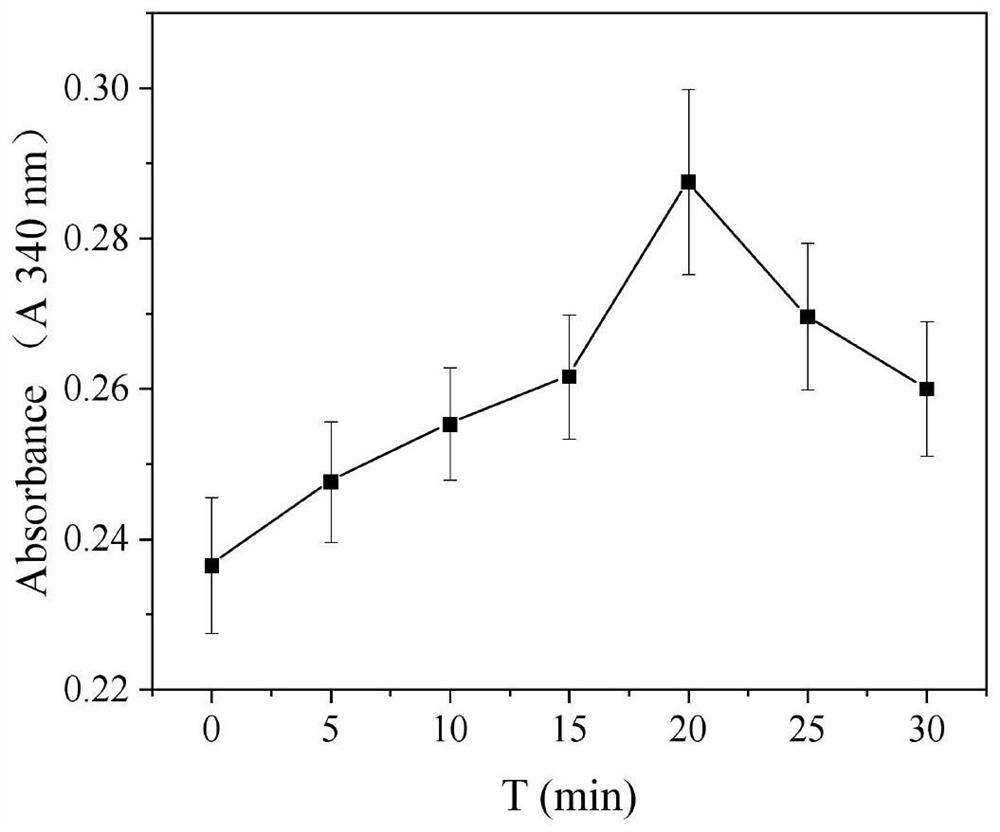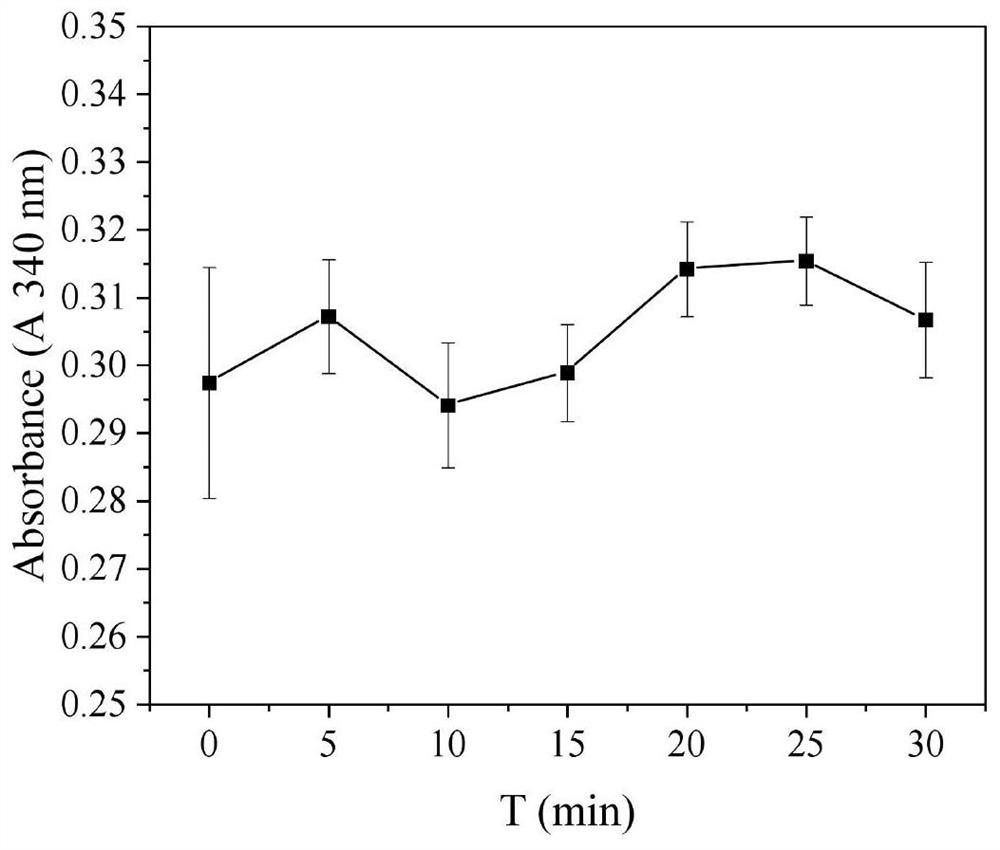Method for preparing cofactor by coupling leucine dehydrogenase with photoelectrocatalysis
A technology of leucine dehydrogenase and photoelectric catalysis, which is applied in the field of biocatalytic coupling photocatalytic preparation of cofactors, can solve the problems of low reaction rate and yield, unstable existence of substrates and products, multi-biological catalysts, etc. To achieve the effect of reducing the cost of experiments
- Summary
- Abstract
- Description
- Claims
- Application Information
AI Technical Summary
Problems solved by technology
Method used
Image
Examples
Embodiment 1
[0020] A method for preparing a cofactor by coupling leucine dehydrogenase with photoelectric catalysis in this embodiment comprises the following steps:
[0021] (1) Induced expression of recombinant protein:
[0022] Add 10 μL of kanamycin to 10 mL of LB liquid medium, shake well, and insert 100 μL of preserved engineering bacteria containing leucine dehydrogenase (see Establishing a Mathematical Equations and Improving the Production of L-tert-Leucine by Uniform Design and Regression Analysis, Wei Jiang, et al, Applied Biochemistry and Biotechnology volume 181, pages 1454–1464 (2017)), 200rpm, 37°C shaker for 12h.
[0023] Add 100 μL of kanamycin to 100 mL of LB liquid medium, shake well, add 1000 μL of activated strains, and culture in a shaker at 200 rpm for 3-4 hours at 18°C. When OD 600 When it reaches 0.5-0.6, add 100 μL of IPTG and continue culturing for 20 h.
[0024] (2) Purification of crude enzyme liquid:
[0025] Divide the cultured bacterial solution into al...
Embodiment 2
[0047] The difference between embodiment 2 and embodiment 1 is:
[0048] In this example, the determination of system 2 is carried out under the condition of photoelectric catalysis. Add 400 μL leucine dehydrogenase enzyme solution obtained in step (2), 100 μL NAD + , 200 μL trimethylpyruvate, 1000 μL NH 4 Cl-NH 3 ·H 2 O buffer solution (pH 10) was used for the reaction, and samples were taken every 5 minutes within 30 minutes.
[0049] In this example, if figure 2 , OD of system 2 340 The value is floating between 0.2365-0.2875, indicating that there may be some NAD + Utilizes the e generated during the photocatalytic process - reduced to NADH, then leucine dehydrogenase consumes the generated NADH, making OD 340 The value increases first and then decreases.
Embodiment 3
[0051] The difference between embodiment 3 and embodiment 1 is:
[0052] In this example, the determination of system 3 is carried out under the condition of photoelectric catalysis. Add 400 μL leucine dehydrogenase enzyme solution obtained in step (2), 200 μL trimethylpyruvate, 1000 μL NH 4 Cl-NH 3 ·H 2 O buffer solution (pH 10) was used for the reaction, and samples were taken every 5 minutes within 30 minutes.
[0053] In this example, if image 3 , OD of system 3 340 Values float between 0.2947-0.3154.
PUM
 Login to view more
Login to view more Abstract
Description
Claims
Application Information
 Login to view more
Login to view more - R&D Engineer
- R&D Manager
- IP Professional
- Industry Leading Data Capabilities
- Powerful AI technology
- Patent DNA Extraction
Browse by: Latest US Patents, China's latest patents, Technical Efficacy Thesaurus, Application Domain, Technology Topic.
© 2024 PatSnap. All rights reserved.Legal|Privacy policy|Modern Slavery Act Transparency Statement|Sitemap



